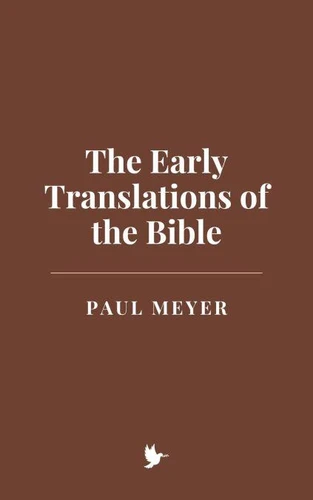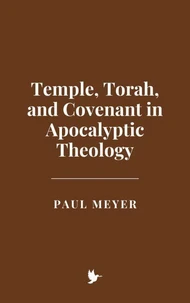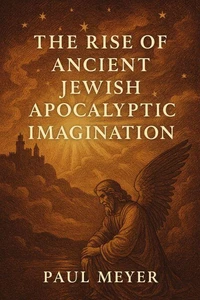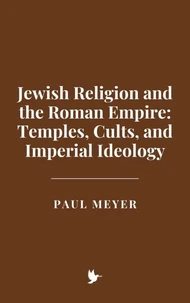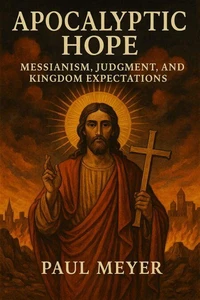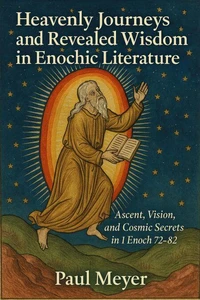The Early Translations of the Bible
Par :Formats :
Disponible dans votre compte client Decitre ou Furet du Nord dès validation de votre commande. Le format ePub est :
- Compatible avec une lecture sur My Vivlio (smartphone, tablette, ordinateur)
- Compatible avec une lecture sur liseuses Vivlio
- Pour les liseuses autres que Vivlio, vous devez utiliser le logiciel Adobe Digital Edition. Non compatible avec la lecture sur les liseuses Kindle, Remarkable et Sony
 , qui est-ce ?
, qui est-ce ?Notre partenaire de plateforme de lecture numérique où vous retrouverez l'ensemble de vos ebooks gratuitement
Pour en savoir plus sur nos ebooks, consultez notre aide en ligne ici
- FormatePub
- ISBN8230718765
- EAN9798230718765
- Date de parution31/01/2025
- Protection num.pas de protection
- Infos supplémentairesepub
- ÉditeurIndependently Published
Résumé
This book explores the history of Bible translations, from the early translations of the Bible in antiquity to the modern era, delving into the complex intersections of language, theology, and culture that have shaped how the sacred text has been understood and communicated across centuries. It examines key moments and figures in the translation history, focusing on how different cultures and theological traditions have translated and reinterpreted the Bible to make it accessible to diverse audiences, often with profound political, social, and religious implications.
The first chapters of the book lay the groundwork for understanding the early translations of the Bible, starting with the Septuagint, the Greek translation of the Hebrew Scriptures, which served as the basis for early Christian engagement with the Old Testament. It then turns to the Coptic Bible, which played a central role in the development of Christianity in Egypt, and the Armenian Bible, which marked a key cultural and theological achievement in the Christianization of Armenia.
Further chapters explore the translations into Georgian, Ethiopic, and Slavic languages, examining how these translations influenced the religious, cultural, and political life of the respective communities. As the narrative progresses, the book shifts to the influence of the Latin Bible in the Middle Ages, before diving into the Protestant Reformation and its revolutionary effect on Bible translations in languages like German and English.
Key figures like Martin Luther, William Tyndale, and the creation of the King James Bible are examined in depth, showing how the Reformation led to the democratization of the Bible through translations into the vernacular, challenging religious authority and reshaping Christian worship. The English Bible's role in the English Civil War and the Commonwealth period further underscores the political importance of Bible translations in shaping national and religious identity.
In later chapters, the book turns to the rise of biblical criticism and historical analysis in the modern era, examining how Enlightenment thinking and textual criticism influenced Bible translation. The critical methods of scholars, the rise of new Bible translations like the Revised Standard Version (RSV), and the role of biblical archaeology in uncovering historical contexts are discussed, highlighting the complex ways in which the Bible has been understood and interpreted.
Finally, the book reflects on the continued influence of the Bible in contemporary society, where modern translations face the challenges of secularism, globalization, and cultural diversity.
The first chapters of the book lay the groundwork for understanding the early translations of the Bible, starting with the Septuagint, the Greek translation of the Hebrew Scriptures, which served as the basis for early Christian engagement with the Old Testament. It then turns to the Coptic Bible, which played a central role in the development of Christianity in Egypt, and the Armenian Bible, which marked a key cultural and theological achievement in the Christianization of Armenia.
Further chapters explore the translations into Georgian, Ethiopic, and Slavic languages, examining how these translations influenced the religious, cultural, and political life of the respective communities. As the narrative progresses, the book shifts to the influence of the Latin Bible in the Middle Ages, before diving into the Protestant Reformation and its revolutionary effect on Bible translations in languages like German and English.
Key figures like Martin Luther, William Tyndale, and the creation of the King James Bible are examined in depth, showing how the Reformation led to the democratization of the Bible through translations into the vernacular, challenging religious authority and reshaping Christian worship. The English Bible's role in the English Civil War and the Commonwealth period further underscores the political importance of Bible translations in shaping national and religious identity.
In later chapters, the book turns to the rise of biblical criticism and historical analysis in the modern era, examining how Enlightenment thinking and textual criticism influenced Bible translation. The critical methods of scholars, the rise of new Bible translations like the Revised Standard Version (RSV), and the role of biblical archaeology in uncovering historical contexts are discussed, highlighting the complex ways in which the Bible has been understood and interpreted.
Finally, the book reflects on the continued influence of the Bible in contemporary society, where modern translations face the challenges of secularism, globalization, and cultural diversity.
This book explores the history of Bible translations, from the early translations of the Bible in antiquity to the modern era, delving into the complex intersections of language, theology, and culture that have shaped how the sacred text has been understood and communicated across centuries. It examines key moments and figures in the translation history, focusing on how different cultures and theological traditions have translated and reinterpreted the Bible to make it accessible to diverse audiences, often with profound political, social, and religious implications.
The first chapters of the book lay the groundwork for understanding the early translations of the Bible, starting with the Septuagint, the Greek translation of the Hebrew Scriptures, which served as the basis for early Christian engagement with the Old Testament. It then turns to the Coptic Bible, which played a central role in the development of Christianity in Egypt, and the Armenian Bible, which marked a key cultural and theological achievement in the Christianization of Armenia.
Further chapters explore the translations into Georgian, Ethiopic, and Slavic languages, examining how these translations influenced the religious, cultural, and political life of the respective communities. As the narrative progresses, the book shifts to the influence of the Latin Bible in the Middle Ages, before diving into the Protestant Reformation and its revolutionary effect on Bible translations in languages like German and English.
Key figures like Martin Luther, William Tyndale, and the creation of the King James Bible are examined in depth, showing how the Reformation led to the democratization of the Bible through translations into the vernacular, challenging religious authority and reshaping Christian worship. The English Bible's role in the English Civil War and the Commonwealth period further underscores the political importance of Bible translations in shaping national and religious identity.
In later chapters, the book turns to the rise of biblical criticism and historical analysis in the modern era, examining how Enlightenment thinking and textual criticism influenced Bible translation. The critical methods of scholars, the rise of new Bible translations like the Revised Standard Version (RSV), and the role of biblical archaeology in uncovering historical contexts are discussed, highlighting the complex ways in which the Bible has been understood and interpreted.
Finally, the book reflects on the continued influence of the Bible in contemporary society, where modern translations face the challenges of secularism, globalization, and cultural diversity.
The first chapters of the book lay the groundwork for understanding the early translations of the Bible, starting with the Septuagint, the Greek translation of the Hebrew Scriptures, which served as the basis for early Christian engagement with the Old Testament. It then turns to the Coptic Bible, which played a central role in the development of Christianity in Egypt, and the Armenian Bible, which marked a key cultural and theological achievement in the Christianization of Armenia.
Further chapters explore the translations into Georgian, Ethiopic, and Slavic languages, examining how these translations influenced the religious, cultural, and political life of the respective communities. As the narrative progresses, the book shifts to the influence of the Latin Bible in the Middle Ages, before diving into the Protestant Reformation and its revolutionary effect on Bible translations in languages like German and English.
Key figures like Martin Luther, William Tyndale, and the creation of the King James Bible are examined in depth, showing how the Reformation led to the democratization of the Bible through translations into the vernacular, challenging religious authority and reshaping Christian worship. The English Bible's role in the English Civil War and the Commonwealth period further underscores the political importance of Bible translations in shaping national and religious identity.
In later chapters, the book turns to the rise of biblical criticism and historical analysis in the modern era, examining how Enlightenment thinking and textual criticism influenced Bible translation. The critical methods of scholars, the rise of new Bible translations like the Revised Standard Version (RSV), and the role of biblical archaeology in uncovering historical contexts are discussed, highlighting the complex ways in which the Bible has been understood and interpreted.
Finally, the book reflects on the continued influence of the Bible in contemporary society, where modern translations face the challenges of secularism, globalization, and cultural diversity.

